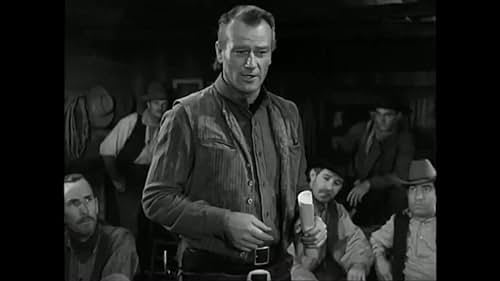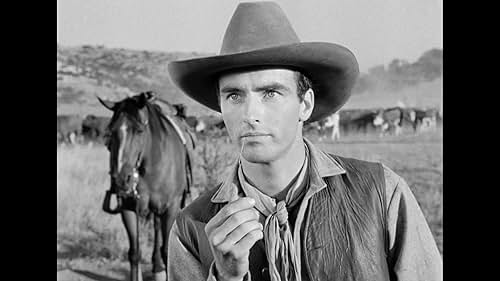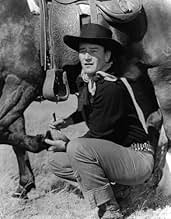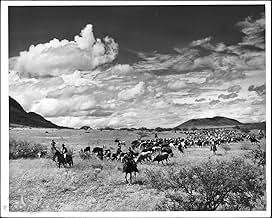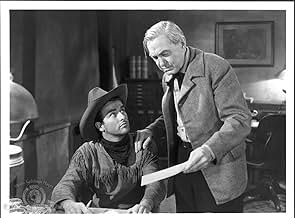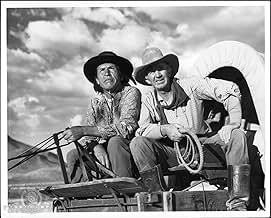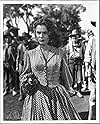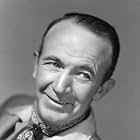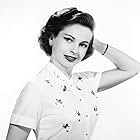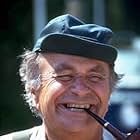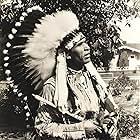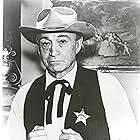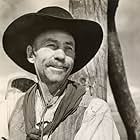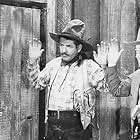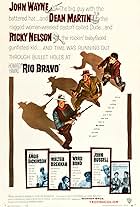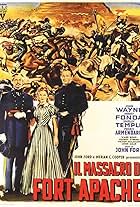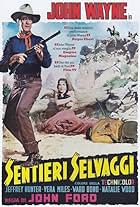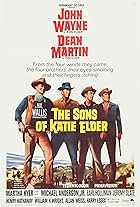VALUTAZIONE IMDb
7,7/10
35.244
LA TUA VALUTAZIONE
Dunson conduce una raccolta di bestiame, il culmine di oltre 14 anni di lavoro, fino alla sua destinazione nel Missouri.Dunson conduce una raccolta di bestiame, il culmine di oltre 14 anni di lavoro, fino alla sua destinazione nel Missouri.Dunson conduce una raccolta di bestiame, il culmine di oltre 14 anni di lavoro, fino alla sua destinazione nel Missouri.
- Candidato a 2 Oscar
- 2 vittorie e 4 candidature totali
Coleen Gray
- Fen
- (as Colleen Gray)
Harry Carey
- Mr. Melville
- (as Harry Carey Sr.)
Chief Yowlachie
- Quo
- (as Chief Yowlatchie)
Hal Taliaferro
- Old Leather
- (as Hal Talliaferro)
John Bose
- Dunston Rider
- (non citato nei titoli originali)
Buck Bucko
- Cowhand
- (non citato nei titoli originali)
Trama
Lo sapevi?
- QuizHoward Hawks shot the beginning of the cattle drive in close-ups of each of the principal cowhands because he felt tight shots would be needed to help the audience keep all the characters straight in their minds. To that end, he also gave them all different kinds of hats, including a derby. Montgomery Clift used Hawks' own hat, which was given to him by Gary Cooper. Cooper had imparted a weather-beaten look to the hat by watering it every night. "Spiders built nests in it," Hawks said. "It looked great."
- BlooperThe film gives 14 August 1865 as the completion of the first cattle drive on the Chisholm Trail. However, the first cattle drive on the Chisholm Trail started and finished in 1867, two years later.
- Curiosità sui creditiOpening credits prologue: Among the annals of the great state of Texas may be found the story of the first drive on the famous Chisholm Trail. A story of one of the great cattle herds of the world, of a man and a boy--Thomas Dunson and Matthew Garth, the story of the Red River D.
- Versioni alternativeAccording to Peter Bogdanovich, the shorter version is in fact the Director's Cut. Howard Hawks was unhappy with the pacing of the longer, 133 minute cut.
- ConnessioniFeatured in The Screen Writer (1950)
- Colonne sonoreSettle Down
(1947)
by Dimitri Tiomkin
Lyric by Frederick Herbert (uncredited)
Played during the opening credits
Recensione in evidenza
Red River (1948)
A Western with a huge cattle drive at its core. John Wayne plays the head rancher, and among his workers and upstarts are a son-like youngster (Montgomery Clift) and a old-timer best friend (Walter Brennan). There are rivalries, Indians, opposing ranchers, and a woman or two who each intrude or help out Wayne in various ways.
A Howard Hawks Western is about as close as you can get to a John Ford Western. Ford is the one who re-discovered a languishing John Wayne in 1939, and Hawks was a parallel director, about the same age, specializing in male-dominated adventure dramas. But Hawks also directed some amazing other kinds of films, including a few classic screwball comedies, the terrific "Only Angels Have Wings," and some film noirs including his film before this one, "The Big Sleep."
So I expected something really special here and in fact this is well done all around. But it falls into so many of the already established stereotypes of the genre, I was surprised and had to keep my disappointment in check. Wayne is terrific as the kind of John Wayne you'd expect, and Brennan is the earthy, witty, likable type he always plays. It is probably Montgomery Clift who shines best, here in his first year in Hollywood, just before "The Heiress" and a string of other great films. This is apparently his first major acting role, as the film was shot in 1946, though another movie, "The Search" (which is very good), was released first.
It's interesting to see co-directing status for Arthur Rosson (the photographer's brother), partly because Hawks would not seem to need a second hand. But then that points to some of the really complex scenes here--mostly shot on location and with easily hundreds if not a thousand or more actual cattle. You realize as you watch this long trek through the low dry hills that the actors on horses are having to really move the cattle through this country for the filming. I'm sure they have help, and all those extras must have been good hired hands. It's still pretty neat to watch that aspect, going for example through a wide river.
In a way you can get fully invested in the movie based on the action and the acting and the characters. Directly. They are strong, believable, and their lines are well written. It's the plot that will seem to fall into familiarity too often for many of you.
A Western with a huge cattle drive at its core. John Wayne plays the head rancher, and among his workers and upstarts are a son-like youngster (Montgomery Clift) and a old-timer best friend (Walter Brennan). There are rivalries, Indians, opposing ranchers, and a woman or two who each intrude or help out Wayne in various ways.
A Howard Hawks Western is about as close as you can get to a John Ford Western. Ford is the one who re-discovered a languishing John Wayne in 1939, and Hawks was a parallel director, about the same age, specializing in male-dominated adventure dramas. But Hawks also directed some amazing other kinds of films, including a few classic screwball comedies, the terrific "Only Angels Have Wings," and some film noirs including his film before this one, "The Big Sleep."
So I expected something really special here and in fact this is well done all around. But it falls into so many of the already established stereotypes of the genre, I was surprised and had to keep my disappointment in check. Wayne is terrific as the kind of John Wayne you'd expect, and Brennan is the earthy, witty, likable type he always plays. It is probably Montgomery Clift who shines best, here in his first year in Hollywood, just before "The Heiress" and a string of other great films. This is apparently his first major acting role, as the film was shot in 1946, though another movie, "The Search" (which is very good), was released first.
It's interesting to see co-directing status for Arthur Rosson (the photographer's brother), partly because Hawks would not seem to need a second hand. But then that points to some of the really complex scenes here--mostly shot on location and with easily hundreds if not a thousand or more actual cattle. You realize as you watch this long trek through the low dry hills that the actors on horses are having to really move the cattle through this country for the filming. I'm sure they have help, and all those extras must have been good hired hands. It's still pretty neat to watch that aspect, going for example through a wide river.
In a way you can get fully invested in the movie based on the action and the acting and the characters. Directly. They are strong, believable, and their lines are well written. It's the plot that will seem to fall into familiarity too often for many of you.
- secondtake
- 5 nov 2012
- Permalink
I più visti
Accedi per valutare e creare un elenco di titoli salvati per ottenere consigli personalizzati
Dettagli
Botteghino
- Budget
- 3.000.000 USD (previsto)
- Lordo in tutto il mondo
- 14.462 USD
- Tempo di esecuzione2 ore 13 minuti
- Colore
- Proporzioni
- 1.37 : 1
Contribuisci a questa pagina
Suggerisci una modifica o aggiungi i contenuti mancanti

Divario superiore
What was the official certification given to Il fiume rosso (1948) in Japan?
Rispondi
